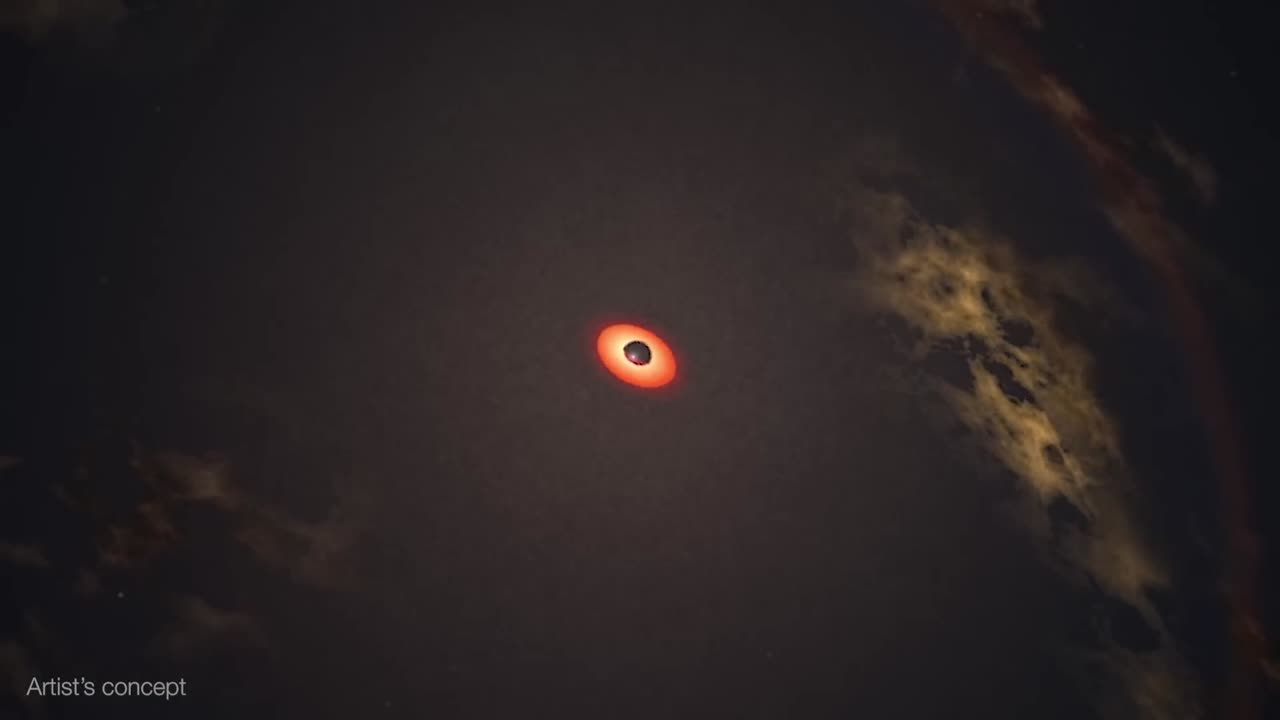Premium Only Content

Black hole snack attack
Using NASA's Neil Gehrels Swift Observatory, which launched in 2004, scientists have discovered a black hole in a distant galaxy repeatedly nibbling on Sun-like star. The object heralds a new era of Swift science made possible by a novel method for analyzing data from the satellite' s X-ray Telescope (XRT).
When a star strays too close to a monster black hole, gravitational forces create intense tides that break the star apart into a stream of gas. The leading edge swings around the black hole, and the trailing edge escapes the system. These destructive episodes are called tidal disruption events. Astronomers see them as flares of multiwavelength light created when the debris collides with a disk of material already orbiting the black hole.
Recently, astronomers have been investigating variations on this phenomena, which they call partial or repeating tidal disruptions.
During these events, every time an orbiting star passes close to a black hole, the star bulges outward and sheds material, but survives. The process repeats until the star looses too much gas and finally breaks apart. The characteristics of the individual star and black hole system determine what kind of emission scientists observe, creating a wide array of behaviors to categorize.
On June 22, 2022, XRT captured Swift J0230 for the first time. It lit up in a galaxy around 500 million light-years away in the northern constellation Triangulum. Swift' s XRT has observed nine additional outbursts from the same location roughly every few weeks.
Scientists propose that Swift J0230 is a repeating tidal disruption of a Sun-like star orbiting a black hole with over 200,000 times the Sun' s mass. They estimate the star loses around three Earth masses of material on each pass. This system provides a bridge between other types of suspected repeating disruptions and allowed scientists to model how interactions between different star types and black hole sizes affect what we observe.
Swift J0230's discovery was possible thanks to a new, automated search of XRT observations called the Swift X-ray Transient Detector.
After the instrument observes a portion of the sky, the data is transmitted to the ground, and the program compares it to previous XRT snapshots of the same spot. If that portion of the X-ray sky has changed,
-
 1:00:55
1:00:55
BonginoReport
4 hours agoJames Comey Indicted! - Nightly Scroll w/ Hayley Caronia (Ep.143)
47.5K51 -
 LIVE
LIVE
MattMorseTV
1 hour ago🔴The UK just hit ROCK BOTTOM.🔴
694 watching -
 1:20:26
1:20:26
Kim Iversen
3 hours agoThis Intel Analyst Has Accurately Predicted Putin's Every Move... Is War With NATO Next?
86.9K24 -
 LIVE
LIVE
SpartakusLIVE
50 minutes ago#1 HERO of the PEOPLE || Ending the Week with FUN, WINS, and LAUGHS
116 watching -
 LIVE
LIVE
The Jimmy Dore Show
3 hours agoIn Undercover Video DOJ Investigator ADMITS Epstein Was CIA! UK Pushing COMPULSORY Digital ID!
9,002 watching -
 LIVE
LIVE
GritsGG
10 hours agoQuad Win Streaks!🫡 Most Wins in WORLD! 3600+
113 watching -
 2:34:12
2:34:12
Spartan
2 hours agoScrims vs Mindfreak and then Ranked or another game idk
161 -
 1:35:57
1:35:57
Roseanne Barr
4 hours agoEnd-Time Prophecies REVEALED: Jonathan Cahn’s Warning
130K42 -
 1:08:58
1:08:58
vivafrei
6 hours agoComey INDICTED! Proof Jan. 6 was a FED-SURRECTION! Ostrich Crisis Getting More Attention & MORE!
140K94 -
 LIVE
LIVE
StevieTLIVE
1 hour agoBirthday Bash HYPE Warzone Wins ALL NIGHT
16 watching